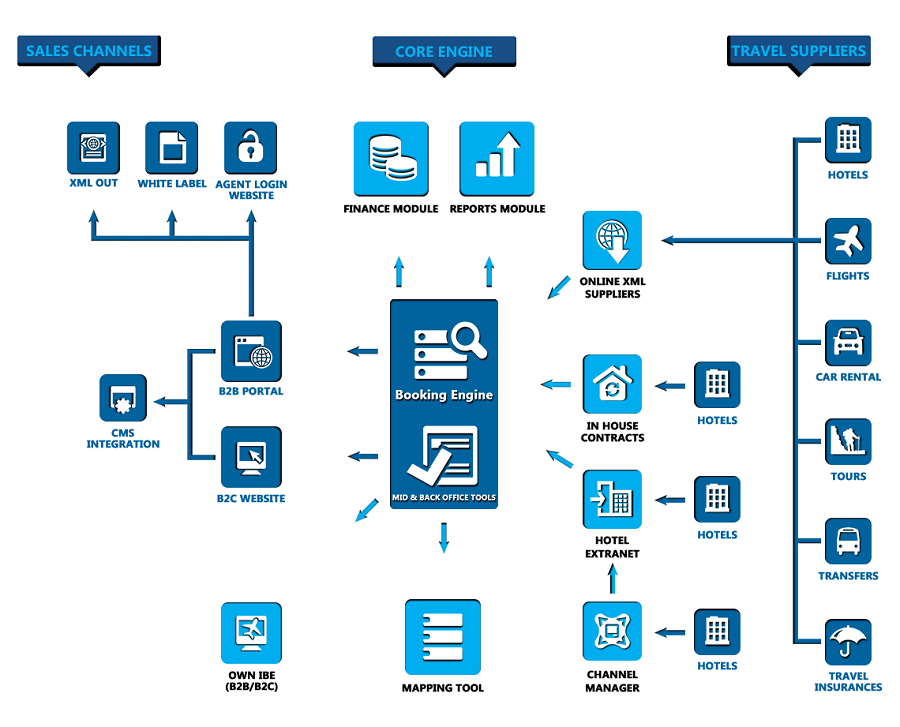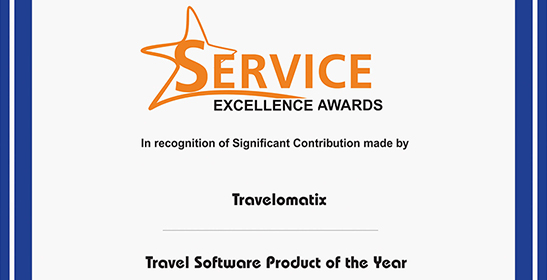Advanced Global Distribution System for Travel Management Companies & OTAs
A Global Distribution System is one of the world’s leading travel technology platforms, providing
Pujitha, November 10, 2025

A Flight GDS is one of the world’s leading travel technology platforms, providing a centralized network for travel agents and service providers to access and book a wide range of flight services. It connects airlines, hotels, car rental companies, cruise lines, and rail operators with travel sellers, offering real-time availability, pricing, and booking capabilities.
Through a Flight GDS, travel agents can efficiently manage flight reservations, issue tickets, and create complete itineraries for their clients—all within a single system. In addition to booking services, modern Flight GDS platforms offer advanced tools and APIs that support automation, customer relationship management (CRM), revenue management, and data analytics.
These features help travel agencies and other businesses streamline operations, personalize offerings, and increase efficiency. With a global network and continuous innovation, Flight GDS platforms play a critical role in the travel ecosystem by bridging the gap between flight providers and sellers, making them essential tools in the B2B travel industry.
Setup Flight GDS Software > Request A Demo

Key Features of a Flight GDS
A Flight GDS offers a wide range of features designed to simplify flight booking and enhance operational efficiency for travel agents and service providers. Core strengths include real-time access to global flight content—airlines, routes, schedules, fares, and seat availability.
With seamless search and booking capabilities, agents can compare options, check live availability, and confirm flight reservations instantly. Multi-currency and multi-language functionality make these systems ideal for international operations.
Advanced automation and integration capabilities are another highlight. Robust APIs allow travel companies to embed Flight GDS content into their own platforms or websites. Additional features such as e-ticketing, fare management, customer profiling, and back-office integration enable businesses to manage operations more efficiently. Tools for reporting, analytics, and CRM further empower agencies to track performance, personalize services, and enhance the customer experience.
Benefits of a Flight GDS for Travel Agencies
Using a Flight GDS provides significant benefits to travel agencies by offering centralized access to an extensive inventory of flights from various airlines. Real-time availability lets agents search, compare, and book multiple services from multiple carriers within a single platform—saving time and improving booking accuracy.
Multi-language and multi-currency support enables agencies to serve clients globally, boosting competitiveness and customer satisfaction. Beyond booking efficiency, a Flight GDS enhances business operations through automation and integration. Agencies can streamline workflows with automated ticketing, invoicing, and itinerary generation, reducing manual tasks and operational costs.
CRM features help agents manage customer data, track preferences, and deliver personalized flight services, while robust analytics and reporting provide insights into sales performance and market trends for data-driven growth.

Growing Demand for Flight GDS Worldwide
Global demand for Flight GDS technology continues to rise as the aviation and travel industries expand and digitalize. Factors driving this growth include increasing air travel, the adoption of cloud and AI solutions, and surging demand for personalized, app-based booking experiences. Emerging markets—especially in Asia-Pacific—are also fueling adoption as airlines and agencies seek robust, scalable platforms to manage inventory and deliver seamless flight booking experiences.
Inventory of a Flight GDS
The inventory within a Flight GDS primarily covers flight-related products and services sourced from global and regional airlines. Agents can access millions of flight schedules, fare options, seat availability, and ancillary services in real time, all within one platform.
These systems continually update and expand their content through partnerships with global carriers, ensuring comprehensive coverage and competitive pricing. This vast inventory allows travel agents to create flexible and personalized flight itineraries for their clients.
How to Find a Flight GDS Integration Partner
To integrate a Flight GDS into your travel business, start by reviewing the official websites of major providers (e.g., Amadeus, Sabre, Travelport, or other regional leaders). Many list authorized technology partners and certified developers who specialize in API integrations and platform setup.
Industry events, aviation technology conferences, and professional networks such as LinkedIn are also excellent resources for identifying integration experts. Before choosing a partner, review their case studies, technical expertise, and support services to ensure they can deliver reliable, scalable solutions.

Global Presence of Flight GDS Platforms
Leading Flight GDS providers operate on a truly global scale, serving hundreds of countries and territories. Collectively, they handle a significant share of worldwide flight distribution. Regional strengths vary by provider, but together they support travel agencies and suppliers across North America, Europe, Asia-Pacific, Latin America, and beyond—demonstrating their critical role in connecting airlines, agents, and travelers worldwide.
Connecting to a Flight GDS
To connect with a Flight GDS, businesses typically begin by registering as an authorized partner or client with their chosen provider. Once approved, they gain access to developer portals offering API documentation, sandbox environments, and credentials.
Integration involves implementing secure APIs to search availability, book flights, issue tickets, and manage reservations. Many travel businesses work with certified Flight GDS integration specialists to ensure seamless connectivity and compliance with industry standards.
Typical Hourly Rate for Flight GDS Experts
The hourly rate for Flight GDS developers and integration specialists varies by location and experience. In Western Europe or North America, experienced API developers often charge around US $50–150 per hour. In countries such as India, rates typically range from US $18–45 per hour for similar expertise.
Why Travel Agents Need a Flight GDS
Travel agents rely on a Flight GDS for centralized, real-time access to an immense inventory of flights from global airlines. This capability allows them to compare options, check live availability, and book instantly—saving time and improving accuracy.
Beyond bookings, automation tools such as e-ticketing, itinerary generation, and back-office integration reduce manual work and boost productivity. Reporting and analytics further help agents tailor services, optimize offerings, and stay competitive in today’s fast-paced, digital-first travel industry.
Major Flight GDS Providers
The flight distribution industry relies on a few key Flight GDS providers that connect travel sellers with airlines worldwide. The three dominant players are Amadeus, Sabre, and Travelport.
Amadeus, headquartered in Spain, has a strong presence in Europe and Asia-Pacific, offering extensive airline content, powerful APIs, and automation tools.
Sabre, based in the United States, is widely used across North America and known for its comprehensive airline partnerships and advanced booking capabilities.
Travelport, which includes the Galileo, Worldspan, and Apollo brands, operates globally and is recognized for its flexible, developer-friendly API integrations and robust flight content.
These providers collectively handle the majority of global flight bookings and offer real-time access to millions of flight options, making them essential for travel agencies, online booking platforms, and corporate travel managers. Their platforms support multi-currency transactions, multi-language functionality, and advanced features like e-ticketing, analytics, and CRM integration. Choosing the right Flight GDS often depends on factors such as regional coverage, airline relationships, and the specific technical needs of the travel business.
Tips to Grow Your Travel Agency
To grow your travel agency, focus on delivering personalized, memorable travel experiences. Use CRM tools and booking platforms to streamline operations and offer tailored recommendations. Leverage social media and digital marketing to reach new audiences, highlight unique packages, and share engaging flight and travel content.
Diversify services by partnering with reliable airlines and expanding into niches such as luxury, adventure, or business travel. Stay current with industry trends and educate your team to provide the latest travel options. Networking at trade shows and collaborating with other agencies can open new opportunities. Finally, provide excellent customer service and follow up after trips to encourage repeat business and referrals.
Important Previous Posts :
1. B2B Travel Booking Software
5. Travel GDS
A Global Distribution System is one of the world’s leading travel technology platforms, providing
A B2C Travel Booking System is a robust online platform that enables travel agencies, tour operator
Sabre GDS System (Global Distribution System) is one of the world’s premier travel technology pla
A GDS system is one of the world’s leading travel technology platforms, providing a centralized n